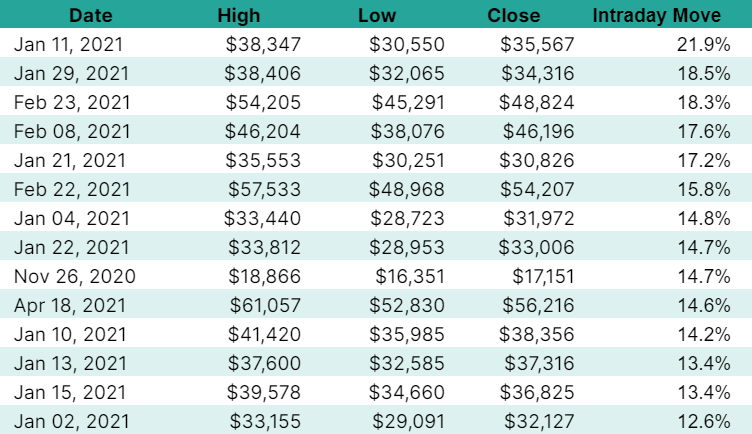
[ad_1]
The crypto sector is in a bull market, and frequent evidence comes from anonymous traders who post their five-, six- and seven-figure investment returns as screenshots on Crypto Twitter.
This condition creates a FOMO-like situation where everyone gets greedy. The temptation to boost potential earnings by twenty times or more is often irresistible for most novice traders.
Today, almost every cryptocurrency exchange offers leveraged trading using derivatives. To enter these markets, a trader has to first deposit collateral (margin), which is usually a stablecoin or Bitcoin (BTC). However, unlike spot (regular) trading, the trader cannot withdraw from a futures market position until it has been closed.
These instruments have benefits and can improve a trader’s outcomes. However, those who often rely on incorrect information when trading futures contracts end up with heavy losses rather than profits.
The basics of derivatives
These leveraged futures contracts are synthetic, and it is even possible to short or place a bet on the downside. Leverage is the most appealing aspect of futures contracts, but it is worth noting that these instruments have long been used in stock markets, commodities, indexes, and foreign exchange (FX).
In traditional finance, traders measure daily price change by calculating the average closing price changes. This measure is widely used in every asset class, and it’s called volatility. However, for various reasons, this metric isn’t helpful for cryptocurrencies and can harm leverage traders.

To be brief, the higher the volatility, the more often an asset price presents wild oscillations. Contrary to the expectation, moving up by 7% to 10% every day represents a low volatility indicator. This happens because the deviation from the mean is small, while random fluctuations between a negative 3% to a positive 3% present a much wider range.
Markets with very low volatility are perfect for leverage
Knowing the general range of how an asset oscillates is extremely important when opening leverage positions. Take the British Pound Sterling (GBP), for example, and one will notice that its volatility is usually below 1% as surprise aggressive daily price changes are unusual.

FX markets are relatively stable markets when compared with stocks and commodities. Therefore, some regulated brokers offer even 200x leverage, meaning a 0.5% move against the position would cause a forced liquidation.
For a cryptocurrency trader, the Swiss Franc’s (CHF) daily change versus the U.S. dollar would likely be seen as a stablecoin.

However, the 3.4% daily Bitcoin volatility hides a more dangerous price fluctuation. While measuring daily closing prices for traditional markets makes sense, cryptocurrencies trade non-stop. This difference potentially creates much wider movements within the same day, although the daily closing often masquerades it.

The average change between the Bitcoin intraday high and low of the past 180 days is 6.5%. As shown above, these ‘intraday moves’ surpassed 10% on 25 occasions. Meaning, in reality, BTC price oscillations are much larger than expected for a 3.2% daily volatility asset.
20x leverage seems crazy considering Bitcoin’s daily moves
To put things into perspective, a 5% move in the wrong direction is enough to liquidate any 20x leveraged Bitcoin position. This data is clear evidence that traders should really consider risk and volatility when leverage-trading cryptocurrencies.
Fast profits are nice, but what is more important is being able to survive the usual daily price swings to hold on to those unrealized gains.
Although there’s not a magical number to set the best leverage for every trader, one must account for the effect of volatility when calculating liquidation risks. Those aiming to keep positions open for more than a couple of days, aiming for 15x or lower leverage, seem to be ‘reasonable.’
The views and opinions expressed here are solely those of the author and do not necessarily reflect the views of Cointelegraph. Every investment and trading move involves risk. You should conduct your own research when making a decision.
[ad_2]
Source link





 Bitcoin
Bitcoin  Ethereum
Ethereum  Tether
Tether  XRP
XRP  Solana
Solana  USDC
USDC  TRON
TRON  Dogecoin
Dogecoin  Lido Staked Ether
Lido Staked Ether
Be the first to comment